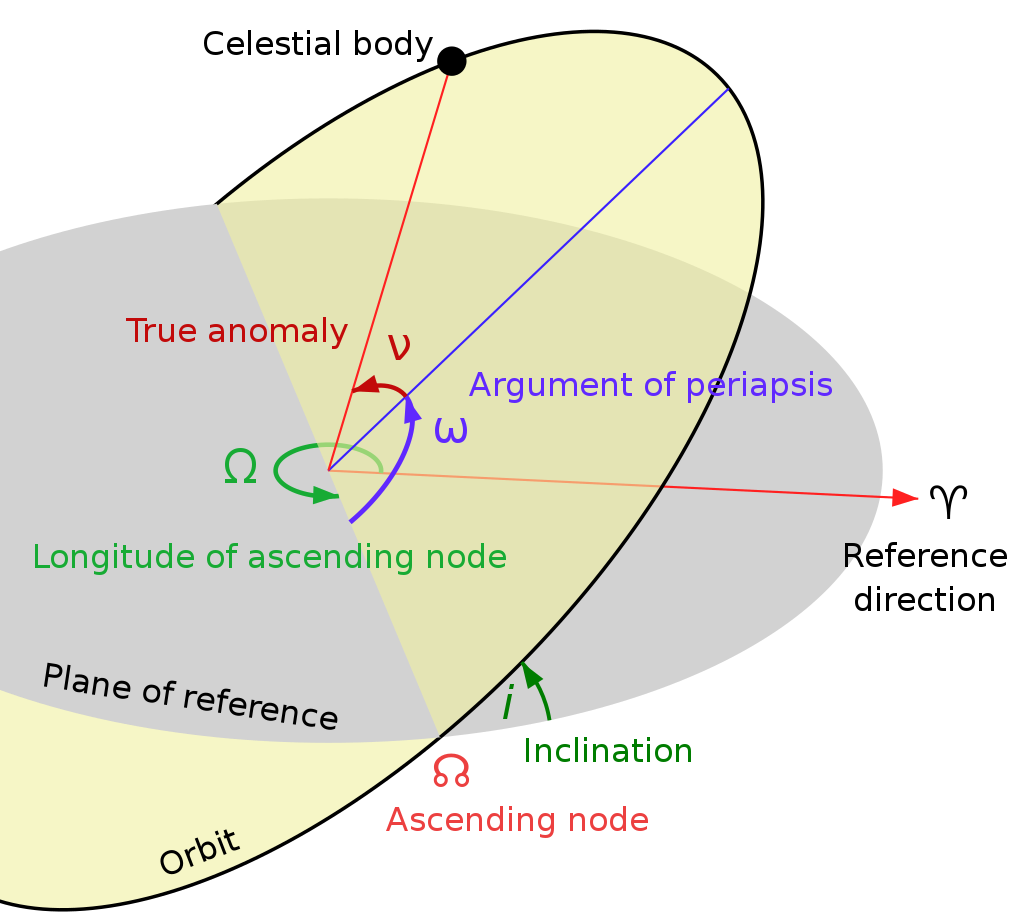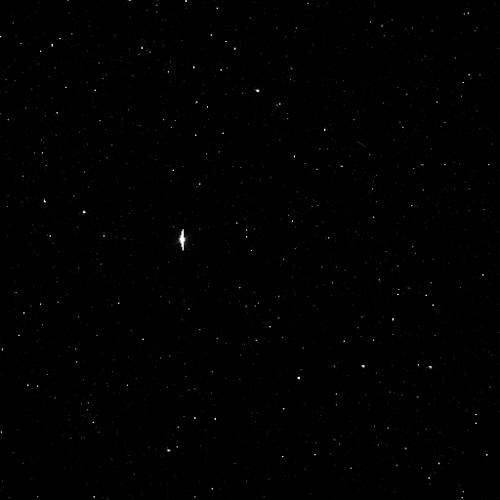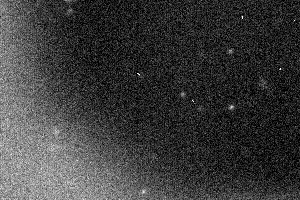What Is an Irregular Moon?
Most commonly, two things make regular moons and irregular moons of Saturn (such as the Ijiraq Moon) different from each other. That is their direction of motion and their orbital inclination. But what are those things?
The moons in our solar system can either have prograde orbits or retrograde orbits.
Prograde orbit — when a moon moves toward the same direction as its parent planet
Retrograde orbit — when a moon moves in the opposite direction as its parent planet
The other one in the checklist is orbital inclination.
Orbital inclination — the angle between a moon’s orbital plane and the orbital plane of Saturn

Most of the natural satellites of Saturn that we know are regular moons. This includes the major moons:
Other regular satellites are the co-orbital moons (Janus and Epimetheus), the shepherd moons (Pan, Daphnis, Atlas, Prometheus, and Pandora), the trojan moons (Telesto, Calypso, Helene, and Polydeuces), and the Alkyonides (Methone, Anthe, and Pallene).
When we say regular satellites, these are moons that have prograde orbits. Aside from moving in the same direction as Saturn, their orbits are not highly inclined to the equatorial plane of this planet.
The word “irregular” does not have anything to do with the moon’s shape. This characteristic is more about the moon’s orbit.
The irregular moons of Saturn are very distant from the ringed planet. They either have prograde or retrograde orbits that are very inclined. The eccentricity of the orbits also contributes to being called “irregular.”
There are three groups of irregular satellites in the Saturnian system. These are the Inuit group, Gallic group, and Norse group.
Did You Know?
The largest moon of Neptune, Triton, is an irregular satellite. It goes in the opposite direction that the planet moves.
And with a mean radius of 1353.4 km, it is the largest natural satellite in our solar system that is considered irregular.
What Are the Inuit Moons?
The Inuit moons are irregular natural satellites of Saturn. They are located very far from the host planet. There are seven moons in this group. Five of them are named while the other two are still called using their temporary designations.
- Ijiraq
- Kiviuq
- Paaliaq
- Siarnaq
- Tarqeq
- S/2004 S 29
- S/2004 S 31
The seven Inuit moons are grouped together because they share some similar characteristics. First off, they move in prograde motion. They are located at a distance of about 11 to 18 million kilometers ( 7 to 11 million miles) from Saturn.
The Inuit moons commonly have a reddish color. Their orbital inclinations are also closely similar which is around 45–50°.

The Ijiraq Moon
Ijiraq Moon: Facts and Figures
All About the Name
- Pronunciation – /ˈɪdʒɪrɑːk/
- Behind the name – Ijiraq (A shape-shifting creature from Inuit mythology)
- Adjective/s – Ijiraupian, Ijiraqian
- Other designation/s – Saturn XXII
Discovery Details
- Discoverer/s –
- Brett J. Gladman
- John J. Kavelaars
- Hans Scholl
- Matthew J. Holman
- Jean-Marc Petit
- Brian G. Marsden
- Phillip D. Nicholson
- Joseph A. Burns
- Discovery date – September 23, 2000
Orbital Characteristics
- Parent planet – Saturn
- Orbital period – 451.4 days (1.24 years)
- Average orbit distance – 11,367,400 km
- Mean orbit velocity – 6,230.4 km/h
- Eccentricity – 0.458
- Orbital inclination – 46.444°
Physical Features
- Equatorial radius – 6.0 km (3.7 miles)
- Equatorial circumference – 37.7 km
- Volume – 905 km3
- Density – 2.3 g/cm3
- Mass – 1,198,934,746,477,750 kg
- Surface area – 452.39 km2
- Surface gravity – 0.002 m/s2
- Escape velocity – 19 km/h
- Rotation period – 13.03 ± 0.14 h
- Albedo – 0.04 or 0.06 (assumed)
Ijiraq Features
Ijiraq is also known as Saturn XXII (22). It is an irregular moon of Saturn that belongs in the Inuit group.
While most moons of Saturn are named after Greek mythology characters, Ijiraq was inspired by the mythology of the Inuit people. We use the words Ijiraupian and Ijiraqian for the adjectival form of this name.
Even though Ijiraq follows a prograde motion, it is still considered an irregular moon. This is because its orbit is quite eccentric. Also, it is very inclined from Saturn’s equatorial plane.
Recent observations indicate that Ijiraq has a reddish color that is stronger than the other Inuit moons. Its orbit is thought to change its eccentricity and inclination. Periodically, its eccentricity increases while the inclination decreases, and vice versa. This cyclical change is called the Kozai resonance.
How Did the Moon Ijiraq Form?
Most of the moons of Saturn, especially the inner moons, are formed through accretion. In this process, they start as dusty disks that surround the young planet. And as they gain more mass, they coalesced and become the moons that we know now.
Ijiraq did not form in the Saturnian System. Like other irregular moons, it must have come from somewhere else until the gravity of Saturn captured it.
Discovery
The irregular moon Ijiraq had a ground-based discovery. A group of scientists discovered it on September 23, 2000. They are Brett J. Gladman, John J. Kavelaars, Hans Scholl, Matthew J. Holman, Jean-Marc Petit, Brian G. Marsden, Phillip D. Nicholson, and Joseph A. Burns.
They discovered Ijiraq using the Canada–France–Hawaii Telescope (CFHT). It just one of the many astronomical facilities of the Mauna Kea Observatory in Hawaii.

The group that discovered Ijiraq is quite diverse in ethnicity. Some are Canadians, Icelanders, and Norwegians—they have Nordicity as their common trait.
The team did not discover Ijiraq alone. On the same day, they also uncovered seven other moons of Saturn. These small moons are Erriapus, Mundilfari, Siarnaq, Skathi, Suttungr, Tarvos, and Thrymr.
Characteristics
Orbit
Ijiraq moves in a prograde motion with an average distance of 11,367,400 km from Saturn. It takes a long time for this small moon to complete a journey around the planet. Its orbital period is about 452 Earth days or roughly 1.2 years.
The orbit of Ijiraq is highly inclined at about 46°, similar to the moon Kiviuq. This orbit has an eccentricity of 0.458, which means that it is not a circular orbit.
Rotation
Since Ijiraq is not in synchronous rotation with Saturn, its orbital and rotational periods are not the same. It takes this little moon roughly 13 hours to rotate on its own axis.
Size
Ijiraq’s radius is approximately 6.0 km or 3.7 miles. It is very small compared to the largest moon of Saturn, Titan, which is nearly 430 times bigger. If we compare it to our moon, Ijiraq is about 290 times smaller.
Albedo
Albedo is the reflectivity of an astronomical body. Scientists can only assume the reflectivity of Ijiraq, which is about 0.04 or 0.06, depending on different sources. Those numbers give us an idea that Ijiraq is not a reflective body.
Others
There is still so much that we do not know about Ijiraq. Aside from being so distant, it is also a small body. Another measurement known about the moon is its equatorial circumference, which is 37.7 km. Its mass is 1,198,934,746,477,750 kg while it has a surface area of 452.39 km2.
What Does the Moon Ijiraq Look Like?
Since it is a newly discovered moon, no close-up look of Ijiraq is available yet. The Cassini probe took an image of this small moon in 2016 but it was just too far. Still, we can hope for new findings on this moon in the future!
One characteristic that gives us a clue on how this moon look is its color. Tommy Grav and James Bauer observed that the moon has a redder wavelength than the other members of the Inuit group. Its color is more distinct than that of Paaliaq (Saturn XX), Siarnaq (Saturn XXIX), and Kiviuq (XXiX).
Behind the Name
The name Ijiraq has a different origin. One of its discoverers, J. J. Kavelaars, had the idea of referring to other mythologies instead of the usual Greco-Roman characters.
He found the name Ijiraq when he was reading a story to his children. The name was perfect because the Ijiraq creature is as unique as the moon itself. Kavelaars then reached out to the tale’s author, Michael Kusugak, who gave him the approval.
The author also suggested other unique names for other celestial bodies including the moon Kiviuq and the planetoid 90377 Sedna.
The Ijiraq in Inuit Mythology
The Inuits believe that the Ijiraq are shape-shifting creatures. They can change into different forms, even into different arctic animals. But no matter what they look like, their red eyes will always give them away.

The Ijiraq is different from the Tariaksuq, a shadowy creature that is half-man and half-caribou. Elder Inuits said that the Ijiraq were once people who went far too north. They entered a different world because they have strayed too far, then eventually became the Ijiraq.
These creatures are said to confuse people, making them lose their way on their journey. One such story is about the husband and wife Buott and Enoogoo.
Buott was known to be a great navigator of the place. But one time, he became disoriented that he cannot find his way back home. He and his wife can see their camp but can not find a way to it. Hopeful, they followed a trail of rock and shale and finally reached the camp where their children are.
Statistical Sources
- https://en.wikipedia.org/wiki/Ijiraq_(moon)
- https://solarsystem.nasa.gov/moons/saturn-moons/ijiraq/in-depth/
- https://solarsystem.nasa.gov/moons/saturn-moons/ijiraq/by-the-numbers/
- https://en.wikipedia.org/wiki/Ijiraq_(mythology)
Image Sources
- Orbital Inclination: https://en.wikipedia.org/wiki/Orbital_inclination
- Ijiraq moon: https://solarsystem.nasa.gov/images/casJPGBrowseS93/N00259249.jpg
- Discovery image: https://en.wikipedia.org/wiki/Ijiraq_(moon)
- Ijiraq in Inuit Mythology: https://leapintothevoidwithme.wordpress.com/2016/04/09/ijiraq/